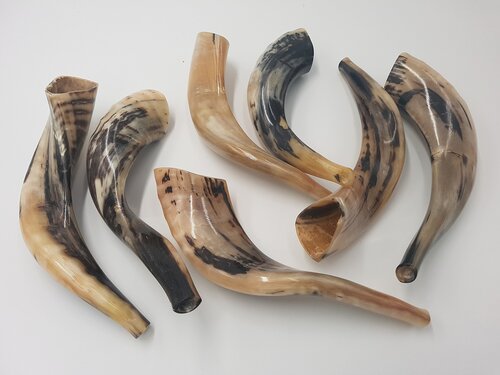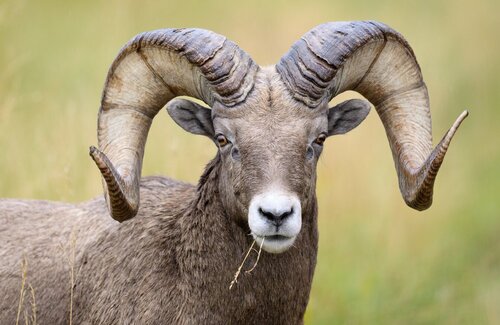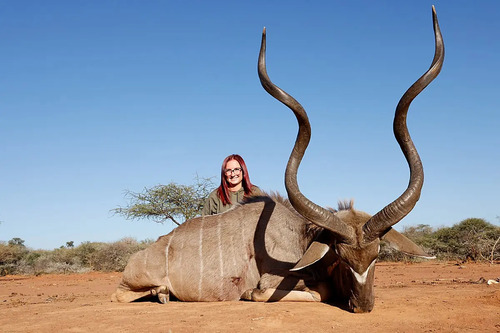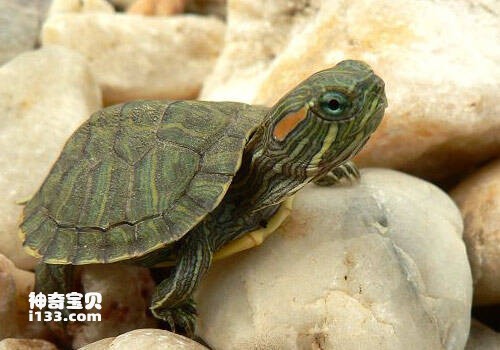The shofar is one of the most ancient and significant instruments in Jewish tradition, used in religious ceremonies and during key moments like Rosh Hashanah and Yom Kippur. But many people are curious about what animal the shofar comes from and the deep symbolism behind its use. In this article, we will explore the origins of the shofar, the animals that provide the horns, and the important role it plays in Jewish culture and history.

A shofar is a musical instrument made from the horn of a kosher animal. It is most commonly associated with Jewish religious practices, where its distinctive, haunting sound is blown during the High Holidays, marking the start of the Jewish New Year (Rosh Hashanah) and calling for reflection and repentance during Yom Kippur, the Day of Atonement. The shofar is also sounded during other special occasions in Jewish history and tradition.
The word "shofar" comes from the Hebrew language, meaning "ram’s horn," although today shofars can be made from several types of animal horns.

The shofar is traditionally made from the horn of a kosher animal that is not used for food but has a solid, hollow horn. Here are the key animals from which shofars are commonly made:
The most well-known and traditional source of the shofar is the ram, specifically its curved horn. This connection is deeply symbolic, as the ram’s horn relates to the biblical story of the Binding of Isaac (Akeidat Yitzchak), in which a ram was sacrificed in place of Isaac. This act is seen as a testament to faith and obedience to God.
Symbolism of the Ram’s Horn: The ram's horn is significant because of its association with the patriarch Abraham. By blowing the shofar on Rosh Hashanah, Jews are reminded of Abraham’s faith and the covenant with God. The curved nature of the ram’s horn is also symbolic of humility and self-reflection, as it is meant to encourage introspection during the High Holidays.
Most Common Shofar: The ram’s horn shofar is the most commonly used in Jewish ceremonies, especially during Rosh Hashanah.

Another popular source for the shofar is the kudu, a large species of antelope found in Africa. The kudu’s horn is long and spiraled, giving the shofar a distinctive and elegant shape. The shofar made from the kudu is often referred to as a Yemenite shofar, as it has been historically used by Jewish communities from Yemen and other parts of the Middle East.
Symbolism of the Kudu Shofar: The long, spiraled shape of the kudu shofar is said to symbolize the winding path of life and the spiritual journey of the soul. The kudu shofar’s large, resonant sound carries great significance during special ceremonies, calling people to wake up and take notice of their actions and responsibilities.
Use in Different Traditions: While the ram’s horn is traditional for Rosh Hashanah, the kudu shofar is often used in some Jewish communities, particularly by Sephardic and Yemenite Jews, due to its impressive appearance and deep sound.

The ibex, a wild goat with large, curved horns, is another animal from which the shofar can be made. The ibex horn shofar is less common but is still considered kosher for use in religious ceremonies. The ibex is a strong and resilient animal, and its horn is sometimes associated with these qualities.
Rarity and Symbolism: The ibex shofar is not as widely used as the ram or kudu, but it still holds symbolic importance. The ibex represents strength and endurance, qualities that are spiritually important during periods of reflection and repentance, such as Yom Kippur.

While the ram, kudu, and ibex are the most common sources of shofars, shofars can be made from the horns of other kosher animals with solid, hollow horns, such as other species of wild goats. However, the horns of cows and bulls are specifically avoided for shofar making.
Why Cows and Bulls Are Excluded: In Jewish tradition, the horns of cows or bulls are not used to make shofars because of their association with the sin of the Golden Calf in the Bible. The Golden Calf represents idolatry and rebellion against God, which makes these animals' horns unsuitable for this sacred instrument.
Creating a shofar is a meticulous and skilled process. The horn is hollowed out, cleaned, and polished, then carefully shaped to produce the desired sound. The horn is softened by heating it, allowing the artisan to create the specific curve and size required for different types of shofars. The mouthpiece is then carved to ensure it can be blown properly.
Each shofar produces a unique sound depending on the animal from which it was made, the shape of the horn, and how it is blown. No two shofars sound exactly the same, making each one a distinctive tool for prayer and reflection.
The sound of the shofar holds deep spiritual meaning in Judaism. It is a call to awaken, both physically and spiritually, urging individuals to reflect on their actions, seek repentance, and renew their faith. The shofar is also a reminder of the covenant between God and the Jewish people, and its blast is intended to inspire awe and reverence.
On Rosh Hashanah, the Jewish New Year, the shofar is blown in the synagogue as part of the religious service. Its loud, piercing blast marks the beginning of the year and calls for personal reflection and spiritual renewal. Traditionally, the shofar is blown 100 times during the Rosh Hashanah service.
At the end of Yom Kippur, the Day of Atonement, the final blast of the shofar marks the conclusion of the fast and the hope for atonement and reconciliation with God.
The shofar has also historically been used to signal important events, such as in times of war, or to announce the arrival of a new moon. In modern times, the shofar is also used during Israeli national ceremonies and celebrations, maintaining its historical role as a powerful symbol of Jewish identity and heritage.
The shofar, a powerful and ancient instrument, is traditionally made from the horn of animals such as the ram, kudu, or ibex. Each type of shofar carries its own unique symbolism, representing strength, faith, and spiritual awakening. Whether blown in synagogues during the High Holidays or used in historical and modern ceremonies, the shofar’s sound serves as a reminder of the deep connection between the Jewish people and their faith.
By understanding what animal the shofar comes from, we can appreciate its rich history, the craftsmanship involved in its creation, and its enduring significance in Jewish tradition. The shofar is not just a musical instrument; it is a symbol of reflection, renewal, and the call to a higher purpose.
animal tags: shofar
We created this article in conjunction with AI technology, then made sure it was fact-checked and edited by a Animals Top editor.
you may also like

When cats move dens, it's usually because they don't feel their current den is safe or comfortable enough. In most cases, catching and forcibly returning a cat to its original den is not recommended as this may cause the cat to become nervous or fearful of your behavior and damage the trustin...

The red-eared slider is a land turtle that lives in tropical and subtropical areas of South America. Its appearance is somewhat similar to that of the Chinese golden coin turtle.The red-eared slider has an oval shell, slightly flat, and relatively wide. It is usually light yellow or gray-brown in co...

The stick insect's body is bright green. When they perch on a branch, they look no different from a dead branch. Not only that, the body color of stick insects will change with the changes in the surrounding environment, sometimes green, sometimes brown, and sometimes yellow....

When it comes to fascinating marine life, few creatures are as captivating as the mantis shrimp. Among them, the Giant Mantis Shrimp and the Super-Red Mantis Shrimp stand out due to their unique characteristics, vibrant colors, and remarkable abilities. In this article, we will dive deep into the ep...

Generally speaking, there is no direct relationship between the color of a turtle's back shell and the age of the turtle. The color of a turtle's shell depends primarily on the species and genetic characteristics of the individual, rather than its age. A turtle's shell color can be...

The choice of rural breeding should comprehensively consider factors such as market demand, technical requirements, investment costs, and local resources. The following are several breeding projects with potential in rural breeding. These projects are expected to be easy to breed, profitable...

Turtles are a large and diverse taxon containing many species and subspecies. Here are some common turtle species: 1. Terrapin: - Red-eared slider turtle (Red-eared slider turtle) - Green-headed turtle -...

Humans are considered to be one of the most endurance animals on earth, especially when it comes to long-term aerobic activities. Here are a few key factors that detail human endurance superiority:1. Evolutionary AdaptationPersistent Hunting: Human ancestors used persistent hunting to hunt prey, and...
Email: jsset668#gmail.com (change # to @) Please indicate your purpose of visit! Guangdong ICP No. 2022053326 XML| map| Chinese

